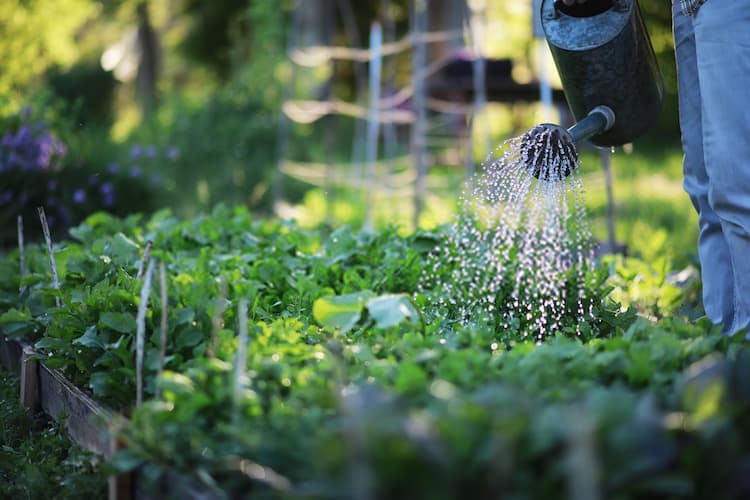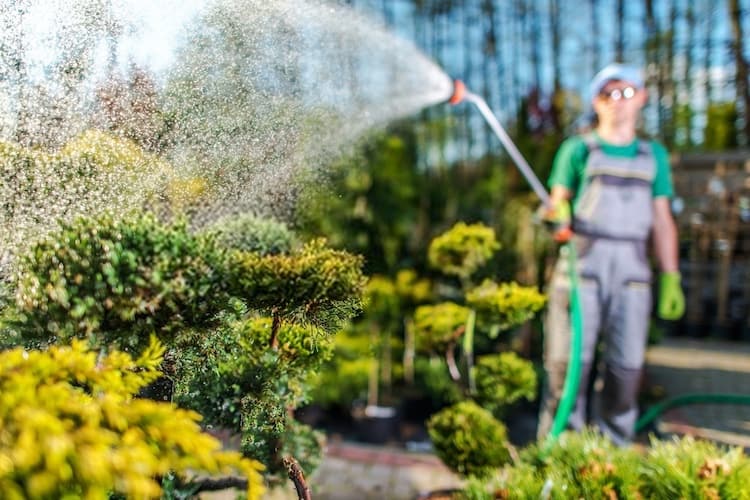Water is made up of oxygen and hydrogen and is essential because of its many benefits to life. Even the hardiest desert plants need water to survive because it is undoubtedly responsible for all life on Earth.
Although, watering your plants seems like a simple task yet one of the most common questions gardeners ask is, is: How often do I water my plants?
How much water plants need and how often can be perplexing to tell. Luckily, we have put together a few tips, ideas, and guides on how to water plants to yield optimum growth.
Read Also: Best Electric Snow Blowers
Table of Contents
What Does Water Do For a Plant?
So, you may be asking, how does water help a plant?
Water helps a plant by serving as a transport medium for moving essential nutrients and minerals from the root system to other parts of the plants. This way, these nutrients are drawn from the soil to be used in the right places by the plant.
Water ensures excellent structural support for a plant, in the absence of adequate water in the cells; the plants may become too fatigued and faint out, so in order, word water helps a plant to position properly.
Plant cells can be compared to water balloons; when they are full, they become hard, and the plant can stand straight-up.
When the plant is in a balanced position, it is easier for water to transport essential nutrients through the pant. Therefore, without the right balance of water, the plant cells will depreciate, leaving the plants malnourished and lacking agility.
Different types of plants have different water requirements. For outdoor plants, you can't be in full control over the amount of water the plants get, especially water if you reside in a coastal area.
However, a way out is to ensure that the soil has a proper drainage system to manage drought because too much water will harm plant growth just as much as little water.
Read Also: How to Make Plant Roots Grow Faster
How Often Do I Water My Plants?
Different plant needs different water requirements for growth, and this decision is easily influenced by factors such as the choice of plant, humidity- hot and dry or rainy and tropical, light, and temperature.
They all play a significant role in measuring how much water a plant needs for optimum growth.
The plant size is also a determining factor to know how often to water your plants. Potted plants in smaller pots tend to have lower soil content, the soil in smaller pots will dry out faster than in larger pots with a large amount of soil.
Generally, smaller plants need frequent watering and attention than larger plants.
Supplying a plant with too little or too much water is the quickest way to harm your plants. This is because there is a slight difference between soggy and dry soil, and either one can be of adverse effect to the plant health.
Knowing and understanding the moisture requirement of your plant cannot be overemphasized. Hence we have provided a list of plants and how to water them.
How to Water Some Popular Plants
Having answered the question: How often do I water my plants? Let's now look at some popular plants and how to water them.
Spider Plant
- Botanical name: Chlorophytum comosum
- Watering Frequency: Daily every 5-10 days
Notes: It's best to water your spider plant when the soil is dry about 2 inches deep. This plant can are water retentive. Hence they can tolerate moist soil if it takes too much time to dry out, then it's not getting enough exposure to sunlight.
Parlor Palm Tree
- Botanical name: Chamaedorea Elegans
- Watering frequency: Water regularly, every 5-10 days
Notes: Like the spider plant, the best time to water your parlor palm tree is if the soil is dry 2" deep. The palm tree plant tolerates moist soil but will slowly dry out if it's not receiving enough sunlight.
Phalaenopsis Orchid
- Botanical name: Ficus elastic
- Watering frequency: Water Regularly, every 5-10 days
Notes: You should water your orchid daily or every other day. Once weekly, run lukewarm water through your plant for about 15 seconds and leave it to soak for a few hours.
General Rules For Watering Plants
- Maintain proper soil moisture levels
- Water less often, but thoroughly
- Ensure water after repotting.
- Keep leaves to dry to prevent diseases
- Ensure to water roots
- Use a soil moisture meter to determine when to water and when not to
Conclusion
To prevent your plants from wilting, they need water to survive. However, plant behavior and water requirements vary.
So for that reason, it is essential to always put into consideration the type and preferences of each plant before gauging the water requirements and how often they can tolerate watering.
This article has provided you with key points to note on how often you should water your plants and some examples of house plants to grow using the provided guidelines.







Leave a Reply